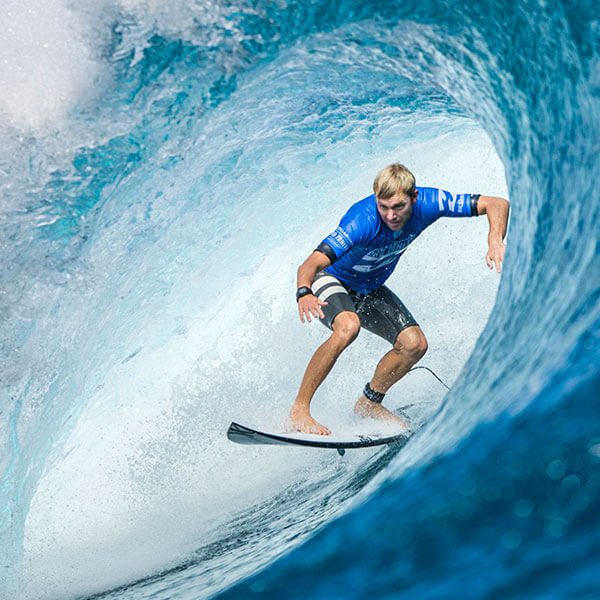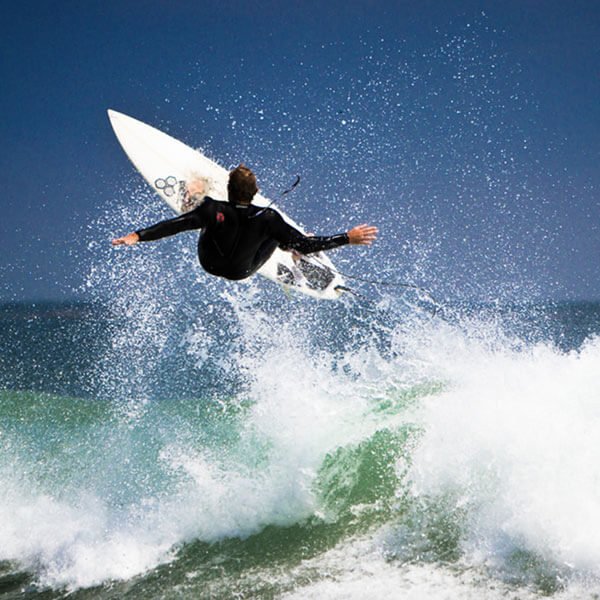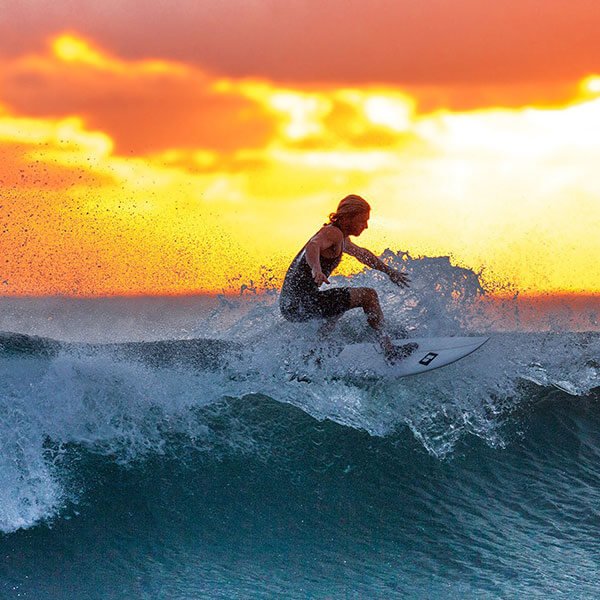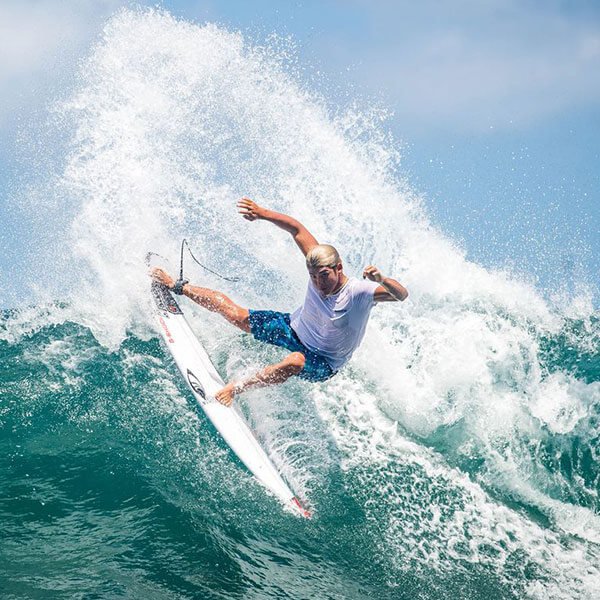Surfing is a surface water sport in which the wave rider, referred to as a surfer, rides on the forward or face of a moving wave, which usually carries the surfer towards the shore. Waves suitable for surfing are primarily found in the ocean, but can also be found in lakes or rivers in the form of a standing wave or tidal bore. However, surfers can also utilize artificial waves such as those from boat wakes and the waves created in artificial wave pools.
The term surfing refers to the act of riding a wave with a board, regardless of the stance used. There are several types of boards. The native peoples of the Pacific, for instance, surfed waves on alaia, paipo, and other such craft, and did so on their belly and knees. The modern-day definition of surfing, however, most often refers to a surfer riding a wave standing up on a surfboard; this is also referred to as stand-up surfing.

















